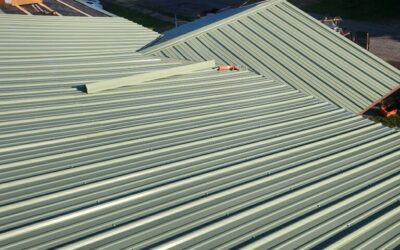📋 Table of Contents
- Introduction: The Big Leak, Big Question
- Who Might Be Responsible? Homeowner vs. Contractor vs. HOA
- Insurance: What Policies Cover a Leaky Roof?
- Covered vs. Excluded Perils: What Triggers a Claim?
- Policy Factors That Matter (Deductibles, Depreciation, etc.)
- Maintenance: Your Duty & Its Impact on Claims
- Real-World Examples: What Happens When Things Go Wrong
- When the HOA or Landlord Is to Blame
- DIY, Repairs, or Full Replacement? Cost Considerations
- Decision Guide: When to File, Pay, or Sue
- How S&K Construction Can Help
- Preventative Steps to Avoid Future Leaks
- FAQs: Short Answers to Common Questions
- Conclusion: Make the Right Call for Your Roof
1. Introduction: The Big Leak, Big Question
When water starts dripping from the ceiling—whether in a single-family home, condo, or rental—the question comes down to one thing: “Who pays for that leaking roof?” Answering that depends on three critical factors:
- Who owns or controls the roof?
- What caused the leak?
- Which insurance policy applies?
This post dives into ownership, insurance coverage, responsibilities, and even real-world Reddit stories—and explains how S&K Construction and Remodeling LLC can help you resolve leaks quickly and fairly.
2. Who Might Be Responsible? Homeowner vs. Contractor vs. HOA
✅ Homeowner
If you own the property, maintaining the roof—including repairs and inspections—is your responsibility. That includes:
- Clearing debris from gutters/valleys
- Replacing old shingles
- Fixing storm damage
Neglect over time means you’re financially responsible.
🛠️ Contractor
If a contractor performed roofing work and made a mistake (e.g., mis-installed flashing) that led to leakage, their workmanship warranty—or even legal responsibility—may apply.
🏢 Homeowners Association (HOA) or Landlord
In condos or HOAs, the roof is often common property. Repairing the roof is the HOA’s duty, while interior damage (e.g., ceiling, drywall, carpets) is often the homeowner’s responsibilty.
Reddit example:
“The strata manager…said roof repair is strata’s responsibility, but interior damage is the responsibility of the homeowner.” (reddit.com, reddit.com, beyondexteriors.com, reddit.com, avnergat.com, reddit.com, investopedia.com, reddit.com)
Landlord scenarios are similar: the roof is the landlord’s responsibility, but damaged tenant belongings may require separate claims.
3. Insurance: What Policies Cover a Leaky Roof?
🏠 Homeowners Insurance (HO-3 policies)
- Dwelling Coverage (A): protects structural elements (roof, ceilings) when caused by covered perils.
- Personal Property (C): covers damaged belongings.
- Loss of Use (D): reimburses extra living costs if uninhabitable.
🏢 Renter’s Insurance
Covers personal belongings, not the roof.
🧢 Condo or HOA Insurance
HOA insures shared structure; unit owners typically get HO-6 for interiors and belongings.
🚧 Contractor Insurance
Contractor insurance covers faulty installation—roof leaks from improper workmanship.
4. Covered vs. Excluded Perils: What Triggers a Claim?
Insurance only pays for sudden, accidental damage from covered perils—not long-term wear.
Covered events include:
- Windstorms, hail, lightning, falling trees, ice/snow, fire (experian.com, quickenloans.com, mmroofsiding.com)
- Sudden plumbing or HVAC system failure inside the roof cavity
Excluded events include:
- Wear & tear (age, corrosion, lack of maintenance) (investopedia.com)
- Floods, earthquakes, landslides, pest infestations (thehartford.com)
5. Policy Factors That Matter (Deductibles, Depreciation, etc.)
💰 Deductible vs. Repair Cost
If repairs cost less than your deductible, filing may not make sense—plus it could raise your premium.
📉 ACV vs. RCV
- ACV = depreciated payout
- RCV = full replacement cost
Older roofs often receive ACV payout (mmroofsiding.com, experian.com, thehartford.com, investopedia.com)
📄 Depreciation and Betterment
Insurers may only pay to restore to the condition just before the incident, not for upgrades (reddit.com)
🔍 Proof of Maintenance
Insurers expect evidence you cared for your roof—routine inspections, debris clearing, timely repairs (investopedia.com)
6. Maintenance: Your Duty & Its Impact on Claims
Skipping maintenance can invalidate coverage. Sudden issues like storm damage are covered—but gradual neglect is not.
Investopedia puts it bluntly:
“Problems that ensue from general wear and tear…are not eligible for reimbursement because they fall under homeowner responsibility.” (investopedia.com)
Keep records of inspections, gutter cleaning, and minor repairs—it all strengthens your defense during claims.
7. Real-World Examples: What Happens When Things Go Wrong
🛌 Renter denied due to “wear and tear”
A tenant’s landlord failed to fix slow roof damage. The insurer denied the renter’s claim citing latent damage and wear (reddit.com).
🏠 Old roof saves interior damage payout, but roof excluded
Another homeowner had a 30‑year‑old roof. Insurer paid for interior damages but not the roof, calling the leak “wear and tear” (reddit.com).
🏘️ HOA repairs roof, but delays interior
One HOA delayed fixing the roof for six months, which led to ceiling damage. They balked at interior repair responsibility (reddit.com).
8. When the HOA or Landlord Is to Blame
🏢 HOA
Often pays for roof but not your interior. Reducing roof leak risk protects all units.
🏚️ Landlord
Responsible for structural damage; tenant’s renters’ insurance covers personal property. If delays cause damage, landlord may be liable for that too.
9. DIY, Repairs, or Full Replacement? Cost Considerations
Depending on cost and coverage limitations, choose your path:
- DIY repair (< deductible—may not trigger insurance)
- Insurance claim request (only for covered event, above deductible)
- Full roof replacement (if structural damage significant)
Weigh costs, deductibles, and coverage details to decide smartly.
10. Decision Guide: When to File, Pay, or Sue
| Situation | Recommended Action |
|---|---|
| Age-related leaks | Pay out-of-pocket; aging not covered |
| Storm/fallen tree damage | File insurance claim (RCV or ACV applies) |
| Contractor errors | Cite contractor warranty / legal recourse |
| HOA-neglected roof | File HOA claim; protect your interior damages |
| Landlord delay damages | Landlord responsible; renters’ insurance for contents |
11. How S&K Construction Can Help
Whether you’re filing a claim or paying privately, S&K Construction offers expert support:
- Free leak inspections & documentation
- Professional reports for adjusters
- Roofing quotes aligned with insurance standards
- Warranty-backed repairs & replacements
- Help overturning denials with evidence of perils
12. Preventative Steps to Avoid Future Leaks
- Inspections: biannual or after major storms
- Debris clearing & gutter maintenance
- Flashing repair or replacement
- Upgrade to ice & water shield in vulnerable zones
- Enforce good contractor practices
Well-maintained roofs withstand storms—and strengthen your claim validity.
13. FAQs
Q: Will insurance pay for my damaged ceiling/floor?
A: Yes, if the roof leak is from a covered peril—they’ll pay for interior damage even if they decline the roof repair.
Q: Does leaking roof always mean a new roof?
A: No—if the damage is small and fixable, you may not need a full rebuild; insurance could cover spot repairs.
Q: Will filing a claim raise rates?
A: Possibly. One valid claim might not, but repeated claims may > increase premiums.
Q: Is old roof automatically excluded?
A: Leaks from normal aging aren’t covered. But if wind/hail damage penetrates an old roof, coverage might apply to the event—not the aging.
14. Conclusion: Make the Right Call for Your Roof
Who pays for a leaking roof? It depends. If you’re a homeowner, the standard answer is you—unless a sudden, covered peril caused it, or a contractor/HOA/storm was responsible.
Key takeaways:
- Assess the cause. Storm or sudden damage? Insurance may pay. Wear and tear? Probably not.
- Document evidence & report quickly. Mitigate damage (tarps/buckets) and record photos.
- Know policy details: deductibles, ACV vs RCV, maintenance expectations.
- Get professional help. Let S&K assist with inspections, claim documentation, and quality repairs.
📞 Schedule your free roof inspection with S&K Construction and Remodeling LLC today — protect your home, your wallet, and your peace of mind.
 (440) 307-2060
(440) 307-2060

